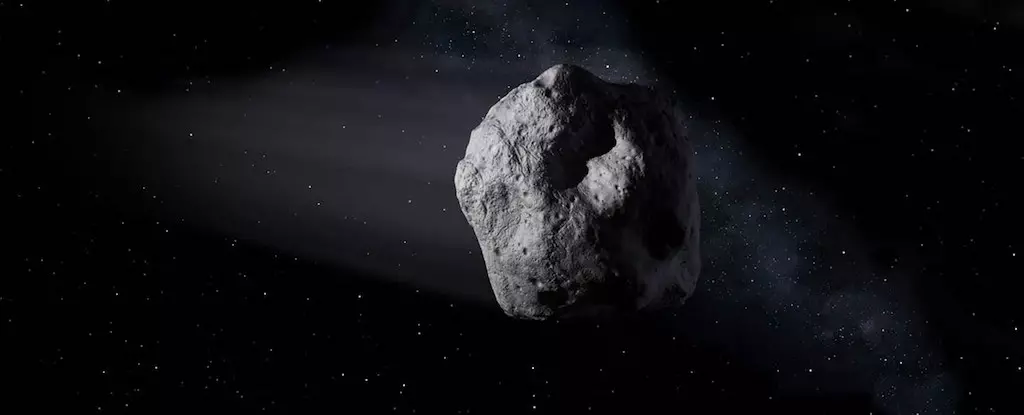Humans have long been captivated by the mysterious and the extraterrestrial. Whenever a new celestial object appears near Earth, the immediate—albeit often unwarranted—speculation is that it might be an alien probe or some form of alien technology. This tendency reveals our innate desire to find life or intelligence beyond our planet, but it also signals a profound misunderstanding of the cosmic environment. Our curiosity often outpaces scientific evidence, leading to sensationalism rather than meaningful discovery. It’s not merely about discovering new objects; it’s about deciphering their true nature. The more we study these celestial wanderers, the more we realize how many are simply part of the chaotic ballet of space debris—ordinary cosmic grains of sand rather than signals of alien contact.
Decoding the Enigma of Arjuna Asteroids
Among these objects, a particular class called the Arjuna asteroids exemplifies how initial assumptions can be overturned by rigorous research. Discovered in the early 1990s, the landmark case was 1991 VG, which captured public imagination because of its Earth-like orbit. Its proximity and path closely resembled that of our planet, sparking wild theories about alien probes or secret human endeavors. However, as scientific investigations deepened, experts understood that 1991 VG was just an asteroid—an ordinary, albeit intriguing, member of Earth’s near-space neighborhood.
What makes Arjuna asteroids fascinating today is their unique orbital resonance. These Near-Earth Objects (NEOs) don’t cross Earth’s orbit in the destructive way typical asteroids might. Instead, they exist in a delicate gravitational dance—quasi-satellites—resonating with Earth but remaining unbound. Their orbits are synchronized in a way that, from our perspective, they seem to orbit Earth, but they are not true moons. Instead, they are celestial neighbors, caught in a gravitational tug-of-war that keeps them in orbit around the Sun while maintaining a constant, close proximity to Earth.
Introducing Arjuna 2025 PN7 and Its Significance
The discovery of Arjuna 2025 PN7, the most recent addition to this group, marks a significant milestone in understanding these cosmic entities. According to recent research by astronomers Carlos and Raúl de la Fuente Marcos, this asteroid is temporarily caught in Earth’s gravitational embrace. Unlike true moons, which are gravitationally bound, 2025 PN7 is set to maintain its quasi-satellite status only for about 128 years—a fleeting moment in the grand timeline of the universe.
This brief period of proximity has profound implications. It challenges our notions of stability and permanence in celestial mechanics. Every few centuries, Earth’s neighborhood reshuffles itself, with objects like 2025 PN7 temporarily becoming “mini-moons” before resuming their independent journeys. These interactions resemble transient alliances—temporary, fragile, but vital clues to understanding the dynamic environment surrounding our planet. Their study enhances our ability to predict potential hazards, safeguard satellites, and even explore new opportunities for asteroid mining or mission planning.
The Broader Implications for Space Science and Humanity
The exploration of quasi-satellites like 2025 PN7 underscores a broader truth: our universe is a complex, ever-changing system that defies simplistic interpretations. Far from being extraterrestrial visitors or alien probes, these objects are the byproducts of gravitational interactions in a crowded cosmic environment. Recognizing their true nature enables us to refine our models of asteroid behavior, improve our planetary defense systems, and better appreciate the intricate gravitational choreography that sustains our solar system.
In a way, the excitement surrounding objects like Arjuna asteroids exemplifies the scientific method at its best—questioning initial assumptions, disproving sensational claims, and gaining deeper insight through careful observation and analysis. As technology advances, we will undoubtedly discover more of these transient celestial companions. Each one is a natural laboratory, offering insights into the mechanics of celestial interactions and the history of our cosmic neighborhood.
Perhaps the most compelling aspect is that these discoveries embody human curiosity—not about alien life, but about understanding our place in an incomprehensibly vast universe. Quasi-satellites serve as celestial signposts, reminding us that while space might seem silent and empty, it is anything but inert. Our continued study reveals the universe’s dynamism and tells us that the most profound mysteries are often the most natural ones—waiting patiently for us to decipher their true nature.

